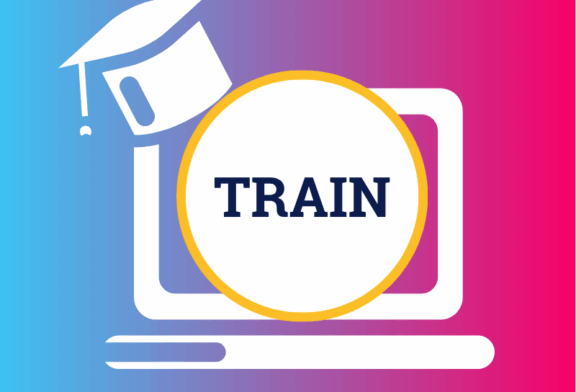Imagine sitting around a physical console with your executive team in a meeting room. The console is filled with different knobs, buttons, switches, and dials that you can manipulate to reduce costs and improve profitability in your company.
If you could only change one setting, what would you do?
Without question, the best thing you could do for your bottom line would be to find the dial that controlled employee engagement and turn it all the way up
Link Between Structured Digital Communications and Engagement
Employee engagement is more than just a buzzword. It is the most important predictor of long-term business success. But, increasing employee engagement is much more complicated than just turning a dial. You have to work to develop a relationship of trust with your employees and create a culture of achievement, teamwork, and constant incremental improvement.
The best way to dial-up employee engagement in your organisation is to use structured digital communications. These communications are especially important in organisations where employees aren’t behind a desk in a cubicle all day. When you have a mobile workforce, structured digital communications may be the only way you have to build a common culture and improve engagement.
Structured digital communications allow you to make sure everyone is on the same page, alert employees to urgent news and provide everyone with the tools and resources they need to do their best work.
Engaged Employees are More Productive and Innovative
Why do so many companies proudly proclaim that their people are their most valuable assets? Because it’s true. Distracted employees are expensive. They have a high rate of absenteeism, high turnover rates, and make more mistakes.
Engaged employees are more loyal, more productive, and more innovative. Engaged employees want the company to succeed and they use their creativity to help the company by finding more efficient ways to work, developing new processes and products, and taking responsible risks.
If you have engaged employees nothing can stop your company from high levels of growth and an ever-improving bottom line. High levels of employee engagement equal lower costs and increased revenues.
How to Use Structured Digital Communications to Drive Up Your Bottom Line
Structured digital communications drive up your bottom line by increasing employee engagement. Structured digital communications carefully designed systems of messages that are sent to employees from management or the executive team. They are more than informal emails. They are more focused than a company newsletter.
The most common types of structured digital communications are:
Each of these communications is designed to make employees better at their jobs. The reason so many employees are not engaged is that they do not see a direct link between their work and the company’s bottom line. They do not feel valued.
Structured digital communications allow your mobile employees to feel part of the company, in touch with the overall goals and direction of the organisation, and proves how much you value them. They increase a sense of community while also promoting individual excellence.
How much of a boost to your bottom line it would be if all of your employees were just 2% more productive? It would be huge. If you use structured digital communications properly to drive employee engagement, that kind of productivity would just be the beginning.
But, to realise all of these benefits, you must make sure you are using structured digital communications properly.
Here are my 7 tips for Digital Communication success:
1. Never Waste Employees’ Time
One of the biggest mistakes companies of all sizes make when trying to increase employee engagement is they send out too many messages. Never waste your employee’s time. Time is a finite resource. If you waste time on messages, employees will learn to tune out anything coming from management. Too much communication has the perverse effect of lowering engagement.
Every digital communication should be sent with a specific purpose. It must be helpful to everyone who is going to receive it. Once employees see that the communications they are receiving from the top are all aimed at making their jobs easier, they will be eager to read future communications and will feel more loyal to the company.
When developing structured digital communications follow these three rules before sending anything out:
Every communication must have a specific purpose
The communication should only be sent to people who will benefit from it
Every communication should have at least one clearly identifiable benefit to the recipients

2. Keep Communications Short
We are all busy. We all are being bombarded with information all day long. Worst of all, we are all trying to multitask. Each of these factors combines to reduce our attention spans. In the middle of the workday, the last thing anyone wants to do is have to read through a lengthy message.
Structured communications are much more powerful if they are short. First, they are simply much more likely to be read. We have all become master skimmers, but few of us actually read anything all the way through with a high level of concentration. Short messages are easier to get through.
Second, short messages are more likely to be absorbed. It is much easier to remember three things than it is to remember 10 things. Even better, it is easier to remember one main point than three points.
If you have a complex message that needs to be communicated, it is better to break it up over several messages across several days, if possible. This will increase employee engagement with the material.
3. Use Alerts Sparingly
Alerts are a powerful tool. They immediately get the attention of your employees. But, overusing alerts has three significant downsides:
Alerts interrupt workflow
Frequent alerts reduce the sense of urgency
Too many alerts will annoy employees
Interruptions decrease productivity. Employees need time for deep work. If they are receiving alerts every 30-minutes they will not be able to do their best work. Also, if alerts from work are too frequent they lose their urgency and start to feel more like social media alerts—something that might be interesting, but that can probably wait.
Worst of all, sending too many alerts will annoy employees and decreases engagement.
Save alerts for matters that require immediate action. Alerts work well for deadlines relating to pay or benefits, project deadlines, or anything that is urgent and important.
4. Create Binge-Worthy Training Materials
One of the best uses of structured digital communications is to create training materials that employees can access on their own time. Some mixture of written content, audio content, and video content tends to work best in most industries.
Employees want training that will sharpen their skills and make them more efficient. But, they want to be able to consume the material on their own schedule.
Make sure that the training material is interesting and presented in a way that encourages thoughtful engagement. The best training will be like Netflix content—they will be binge-worthy. Employees will want to watch the next module as soon as possible.
5. Make it Easy to Execute
Often organisations use structured digital communications to influence employee behaviour. But, they fail to achieve anything meaningful because they make it too hard for employees to take the desired action.
The best communications make it easy for employees to take the desired action. The communication should have a clear call to action and it should include all the information or tools the employee needs to accomplish the action. Deadlines also work well to encourage prompt action.
When an employee receives a message asking them to review something and the document is attached or there is a link, they feel better about the exchange and are likely to take immediate action. But, if they have to find the document themselves, they are likely to push off that task until later.
6. Allow Real-Time Feedback
True communication flows in two directions. One trap some managers fall into is treating structured digital communications as a broadcast-only medium. They send out directives and decrees.
If you want to increase employee engagement, many of your communications need to allow for real-time feedback from your team. This doesn’t mean you should crowdsource policy directives. But, you should actively solicit input from your employees on specific project problems. When employees see that you value their expertise and want their feedback they are more likely to work harder and accept decisions that they disagree with.
7. Focus on Resources and Tools
Use digital workforce communications to show your employees you value them and their talents, not just tell them. Focus your communications on tools and resources that make their job easier. This will show them that you really care about them.
If your communications are filled with orders or bland inspiration, employees will learn to ignore anything you send. But, if you are regularly making it easier for them to request time off, get paid, or just do their work more efficiently, they will be more receptive to the few messages where you need them to do something specific and they will be more likely to buy into your strategic vision.
Structured digital communications are the best way to increase engagement among mobile employees when used properly. But, before you can utilize these structured digital communications you need to have the right tools to curate and deploy your communications.





